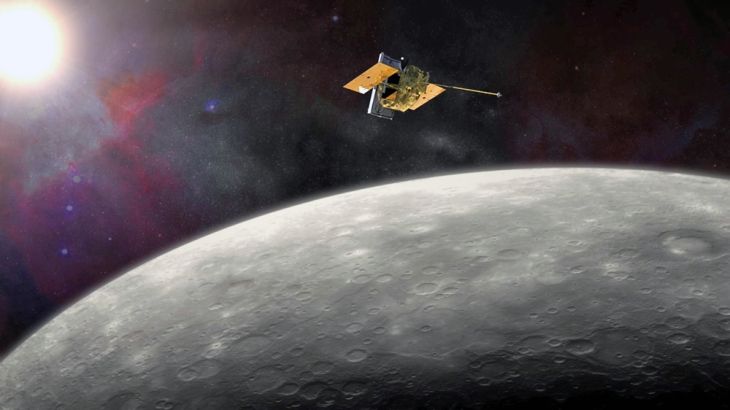NASA spacecraft smashes into Mercury
Collision of Messenger spacecraft with the planet brings an end to one of the space agency’s most productive missions.

NASA’s Messenger spacecraft has crashed into the planet Mercury after running out of fuel, in an incident expected by the US space agency.
On Thursday, Messenger – which stands for ‘Mercury Surface, Space Environment, Geochemistry, and Ranging’ – slipped out of orbit following a successful four-year tour of the rocky planet.
Keep reading
list of 4 itemsHong Kong’s first monkey virus case – what do we know about the B virus?
Why will low birthrate in Europe trigger ‘Staggering social change’?
The Max Planck Society must end its unconditional support for Israel
NASA said it was powerless to stop gravity from dragging the spacecraft towards the planet.
Its collision at a speed of more than 14,000kph added another small crater to Mercury’s already-pitted surface.
Mercury is only slightly bigger than our moon and is the closest planet to the Sun, but until the $450m spacecraft arrived in Mercury’s orbit in 2011, little was known about the planet.
Since then, the 485kg spacecraft has been using its seven scientific instruments to scan and feed back to Earth volumes of data.
“The material that Messenger has sent is enormous,” says Francisco Diego, Senior Research Fellow at the Department of Physics and Astronomy at University College London.
“There are a lot of spectroscopic measurements, different gamma ray, x-ray spectrometers that characterised different depths of the soil of Mercury.”
![Technicians from the Johns Hopkins University prepare the Messenger spacecraft [NASA via AP]](/wp-content/uploads/2015/04/0cc8dc4a2de6442d90fb87f8af795f5d_18.jpeg)
Messenger sent back images of Mercury’s moon-like surface in unprecedented detail.
Scarred by the collision of asteroids and meteorites, these pictures also revealed the presence of ancient lava flows, suggesting the planet may have had a large ocean of magma early in its history, after its formation about 4.5bn years ago.
“It has a very massive solid core or iron,” says Diego. “Similar to the Earth but much bigger – proportionately bigger.
“It is almost sure now that there is a liquid core also there, producing that magnetic field that is similar to the magnetic field of the Earth.”
Messenger recorded surface temperatures on Mercury which fluctuate between minus 170 and plus 420 degrees Celsius. It also discovered ice at the planet’s poles, covered by a layer of dark matter.
“The team has put forward the hypothesis that this dark material is in fact organic carbonaceous material delivered to Mercury by the same objects that brought the water ice,” said Sean Solomon, Principal Investigator of the Messenger mission.
“[They were] probably from the outer solar system, what on our planet were once some of the building blocks of organic chemistry and life.”
The next science mission to Mercury is planned by a joint European and Japanese team.
It is not expected to arrive there until 2024. Until then, scientists will be kept busy working through the huge volume of data from Messenger, hoping to further transform our understanding of the planet and how the solar system was formed.
Follow Tarek Bazley on Twitter: @TarekBazley